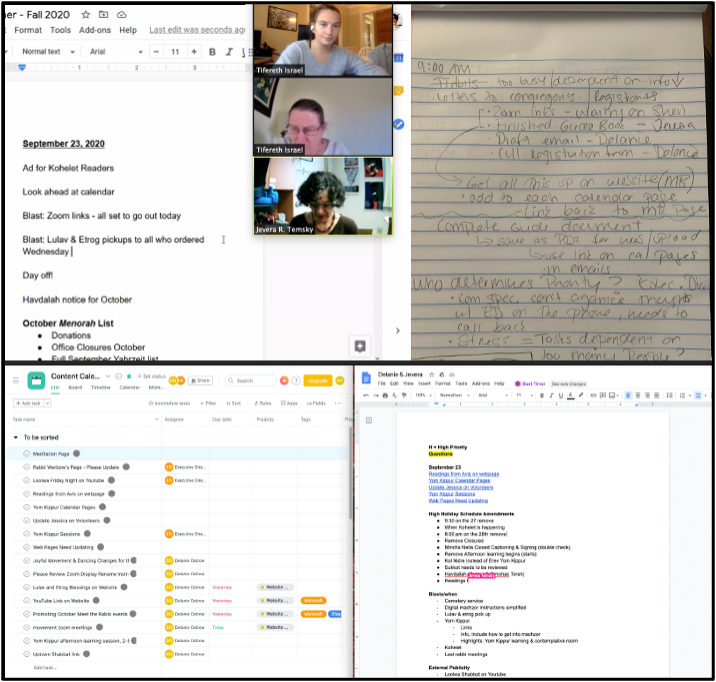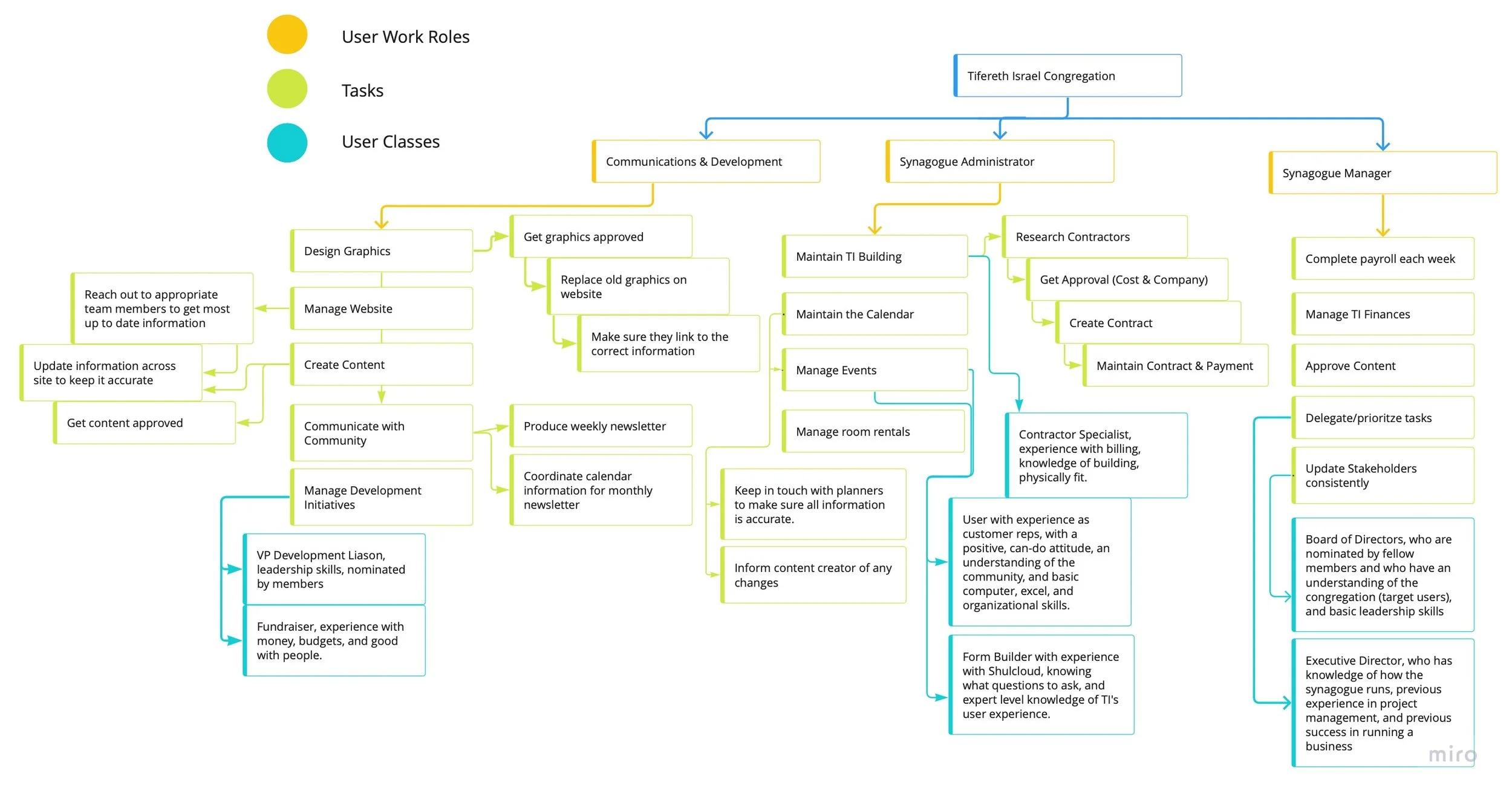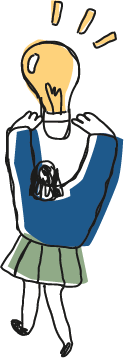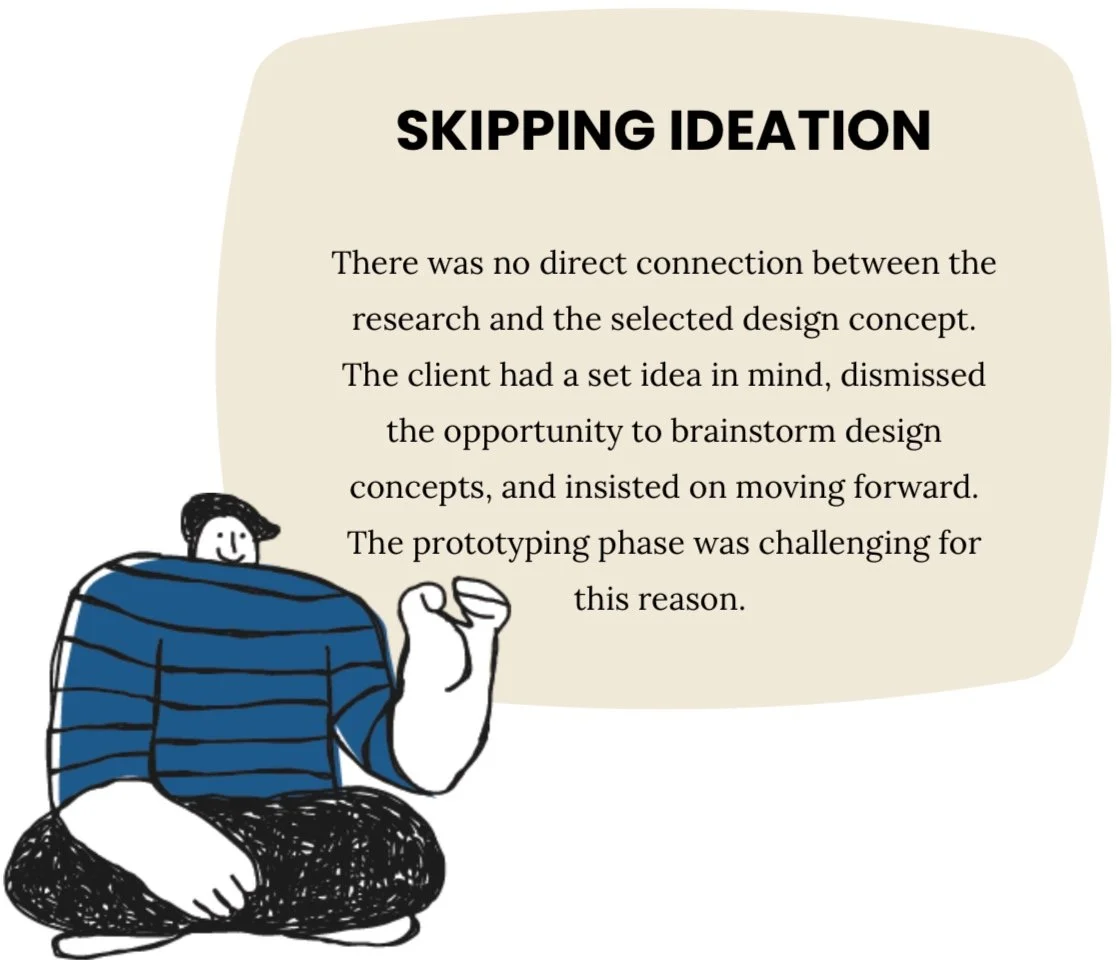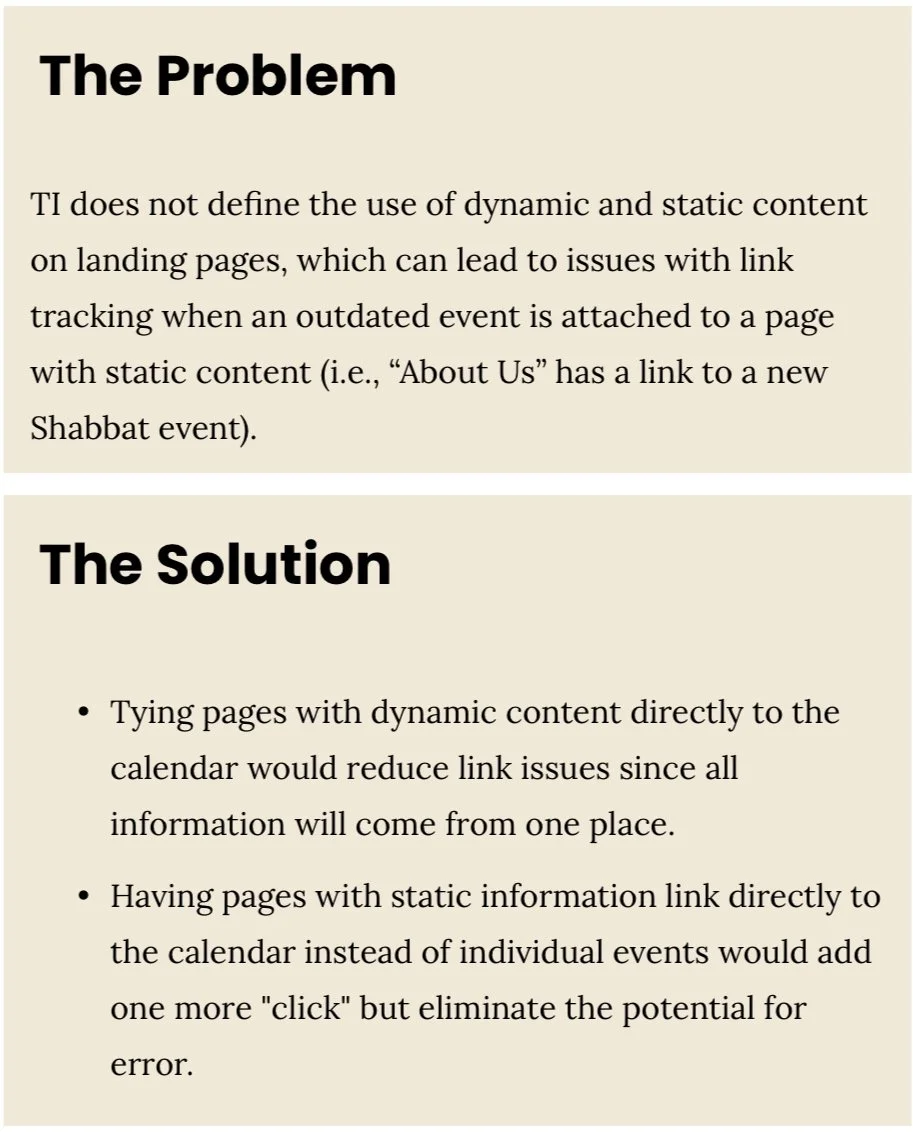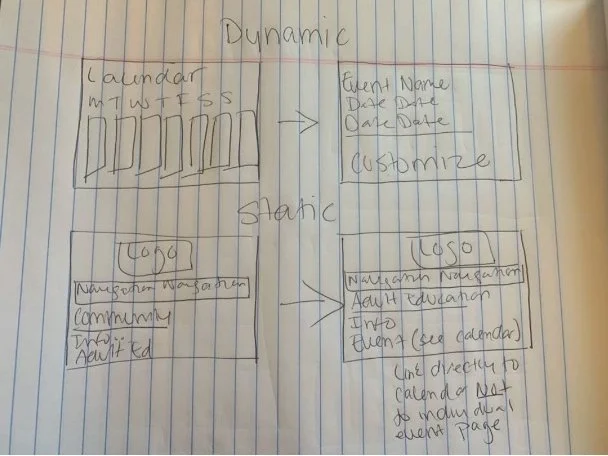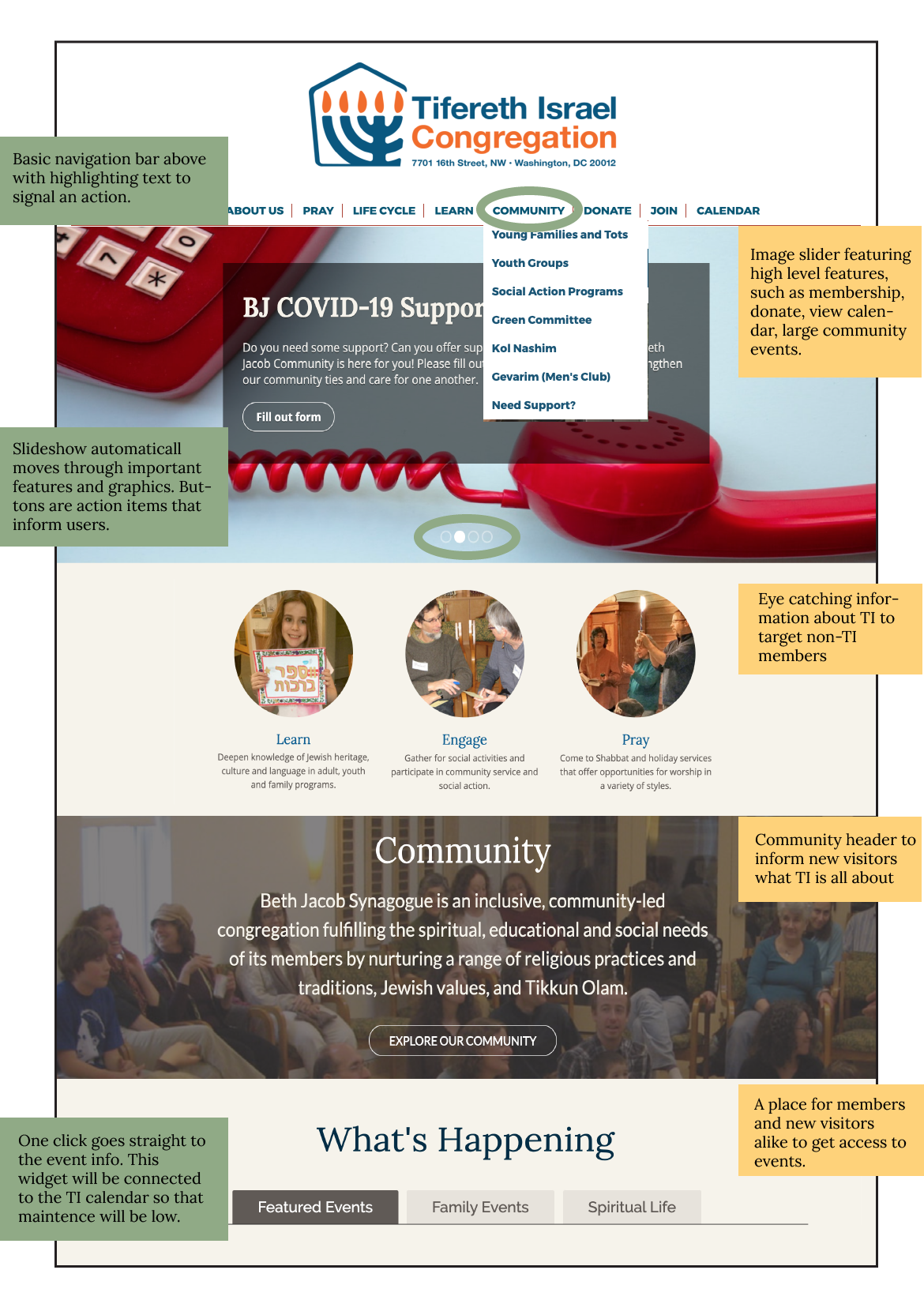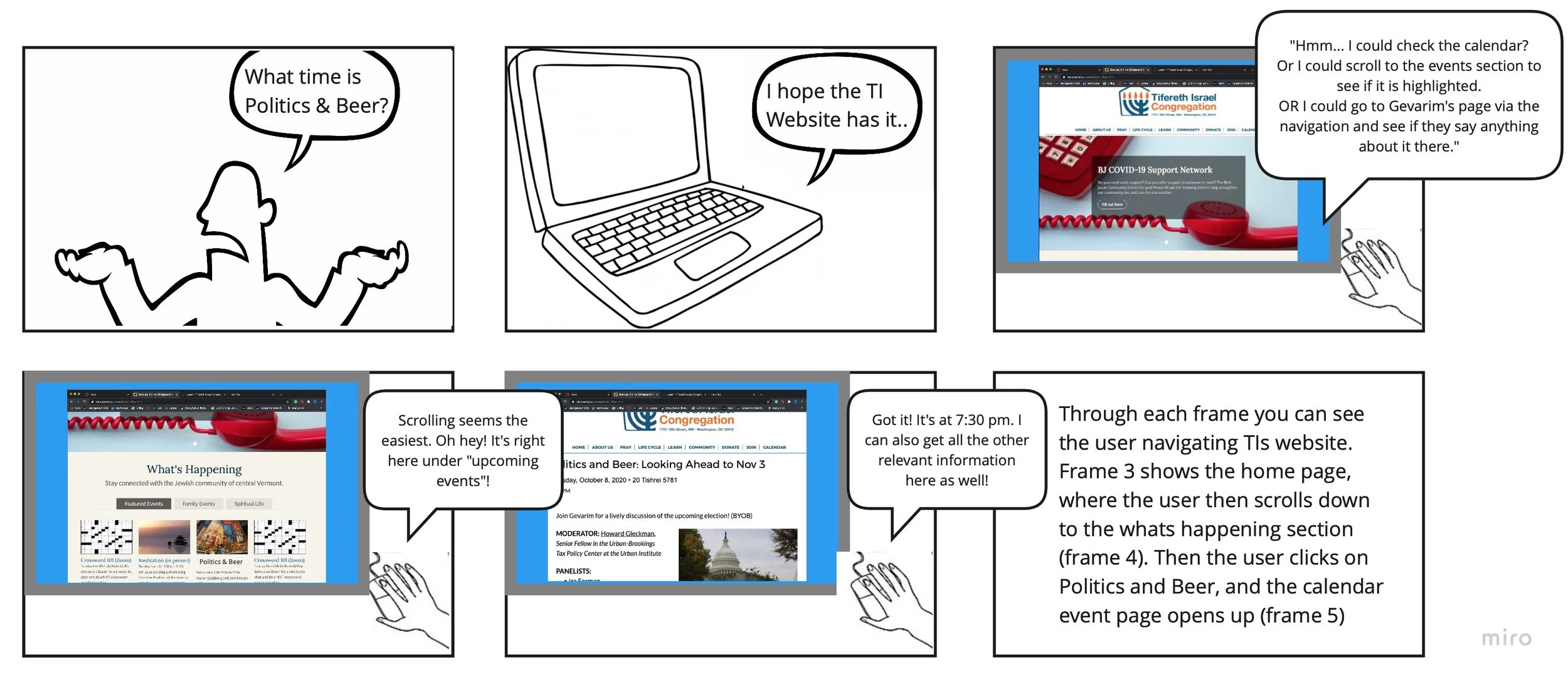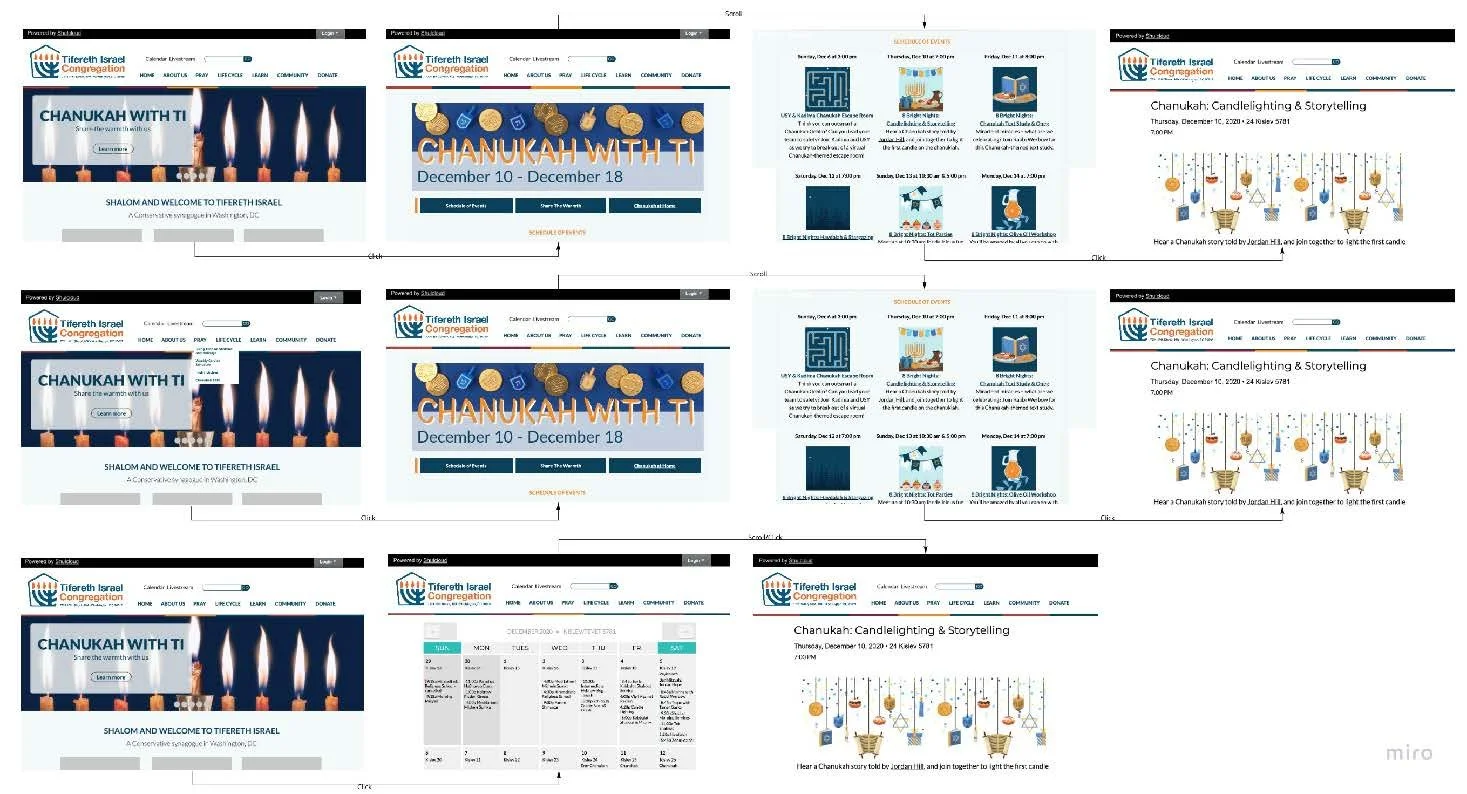DELIVERING A UX APPROACH TO TIFERETH ISRAEL’S WEBSITE
Beginning to Repair TI’s Culture of Immediacy
Increased congregant website traffic by 50% in the first month after launch.
Team: UX Designer & User Researcher (Myself), Project Manager (Executive Director), Usability Testers
Tools: InVision, Miro, PowerPoint
Timeline: 5 Months (August – December 2020)
OVERVIEW
ROLE + IMPACT
TI began implementing the Event Planning Service, improving some facets of TI's workflow. However, there were still noticeable issues with TI's customer service and a need for a business structure. This project focuses on the business ecosystem and designing a creative solution to improve it. I initiated and managed the entire project, including the following:
PROBLEM STATEMENT
Tifereth Israel Congregation has a deeply rooted history of catering to congregants' needs, fostering a disruptive environment of immediacy. Ultimately, this environment costs TI more time and money and has created new and unnecessary barriers for congregants and potential new members.
The solution should benefit both the TI Staff and the congregants. Discovering the challenges and pain points in TI's workflows was the main driver when entering the research phase.
RESEARCH: FIELD VISIT
PRE-VISIT PREPARATION
To begin the research phase, I completed a pre-visit preparation that assisted with the discovery phase. I looked at TI from all angles and how it fits within the UX world, decided on data sources, and selected visit parameters.
RAW DATA FROM THE VISIT
Using these methods, I collected interview highlights and raw activity work data. The raw activity work data is below.
The raw data was a lot to sort through. I wanted to quickly translate what I had learned into resources so I could reference them later in the project. The next step led to the post-visit analysis.
POST-VISIT ANALYSIS
I completed three studies to begin distilling and organizing the raw data for my post-visit analysis: an Early User Work Role Model, Initial Flow Diagram, and a WAAD (Work Activity Affinity Diagram). The Initial Flow Diagram that informed the WAAD is below:
In addition to condensing the raw data, completing the post-visit analysis helped me realize what work tasks may be missing within roles – for example; I don't know much about the Executive Directors' specific work tasks.
This process revealed the "back-end" of TI's workflow, the side that TI members don't see and have no idea how intensive it can be.
RESEARCH: ANALYSIS
USER RESEARCH DATA MODELING
After synthesizing the raw work data into clear work activity notes and diagrams, I was ready to analyze. To do this, I completed a Social Model, Physical Work Environment Model, and a User Work Role Model. I defined all target user classes, information needs, and any barriers to usage for each model.
The Physical Work Environment Model affirmed some cultural issues that impact Staff workflow. These barriers are listed below.
I ended the data modeling phase with a Hierarchal Task Inventory created to pull together all of the discovered user work roles, tasks, and user classes. The model is pictured below.
All work roles depend on each other's responsibilities, preventing flexibility and task independence for the staff member. This dependency can cause barriers to completing projects in a timely, organized manner. Everything at TI is overly intertwined, making it challenging to have a structured workflow.
AFTER RESEARCH, BEFORE DESIGN
However, the selected concept, a homepage re-design, still fit within the project's scope and covered the problems brought to light during the research phase. Although it could have been smoother design-process-wise, we could still move forward with the design phase.
RESEARCH SUMMARY: CONNECTING THE DOTS
An insight of note from the research phase, influenced by secondary knowledge, is an issue with a task in the Hierarchal Task Inventory Model. It summarizes the research well, exemplifying TI's cultural and workflow problems. This task flow is "replace old graphics on the website —> make sure they link to the correct information." TI members want to be able to go to the website and "not get lost." They want all the information right in front of their faces when they enter the webpage, and it causes the following problems:
Updating clickable graphics on the website at the command of congregants has led to a homepage jam-packed with information that could be visually easier to digest, especially for a new visitor/non-TI member.
The User Work Role (Communication Specialist) maintaining the information has to dedicate most of their time to keeping the homepage up to date as the event and congregational information constantly changes.
Users ignore pages with static content on the website and other essential forms of communication because it isn't as "easy" to access them.
Congregants have gotten used to having everything at their fingertips or with one click, even if it isn't the most worthwhile solution, which is why a UX-backed approach is needed.
DATA MODELING & DESIGN
SKETCHING THE CONCEPT
Moving forward with the design concept of making TI's website and homepage more user-friendly, I developed two sketches highlighting some of the main issues with the current website. The sketch below shows what eliminating date-based links (mainly linking to ever-changing calendars/events) on static pages would look like:
TI would benefit from more defined content types on landing pages to help users navigate more efficiently. The goal would be that even with more than one click, the extra step would make logical sense and be of quality to the user.
Ideally, Tifereth Israel's website is a hub for members and an informative landing page for all information about TI. The struggle in the past has been the balancing act of these two ideas.
CONCEPTUAL DESIGN AS A MAP
As the first landing point for new members and a valued access point by TI members, I wanted to focus on a unique design that carefully balanced targeting new visitors and being accessible and pleasing to TI members. Below is the Conceptual Design Map that visualizes this idea.
SKETCHES OF FEATURES
Next, I sketched features of the conceptual design from three perspectives: ecological, interaction, and emotional. The ecological (yellow) and interaction (green) sketches proved highly insightful, and you can see the combined sketch below with notes.
Tackling features based on these different perspectives was helpful because I was encouraged to pull from parts of the research phase to ensure the design catered to all aspects of the user's needs.
Now that I knew what users would encounter in the design concept, I wanted to test it. To do this, I created a storyboard and a wireframe representation.
STORYBOARDING
Creating the storyboard was easy due to TI Staff constantly handling congregants calling the office, asking how to find information about an event, even if it is displayed bulletin-board style on the homepage.
It was helpful to be put in the user's shoes and explore all the different ways they could get the information with the new features from the sketches.
Wanting to ensure that the flow shown in the storyboard was feasible, I created a wireframe based on the current functionality of the platform TI uses, called ShulCloud.
WIREFRAMING
Using InVision, I created a Wireframe for a similar event covered in the Storyboard, Virtual Family Shabbat. There were two ways users could get the information they needed, so I showed both. You can see the wireframe below.
I made these design decisions based on constraints from the TI website platform, ShulCloud. Synagogues are limited to selecting templates, and designers can only override the CSS after the selection. To move forward after selecting features in the sketching phase, I found the closest template to the design vision and used that to model the wireframe.
PROTOTYPING
TESTING
Focusing on the "Congregant" user work role, I created a medium-fidelity click map in InVision, and assigned four users (all of different demographics and community roles) to navigate the TI website to register for the Chanukah event "Candle lighting & Story Telling."
The new design has successfully facilitated one to two-click navigation for what users desire; now, getting users adjusted to change will be the next challenge, and lots of phone calls to the TI staff.
Completing the testing phase with congregants revealed interesting “long-term” problems. I wanted to ensure we gave attention to these issues in case stakeholders needed to know about their value, so I did a few minor evaluations.
EVALUATION
To address potential long-term problems, I executed a System Usability Questionnaire and a Thinking Out Loud interview with a user; then, I evaluated all potential ecological, interaction, and emotional problems and brought repetitive ones into a cost-importance analysis, which is below.
I amended the "fix in this version" issues and began the implementation. The development took about four months and involved heavy coding (CSS overriding & HTML). It was challenging but gratifying upon completion as the sole individual building the site.
Changing the culture of an organization takes work. However, a solution is necessary when it directly impacts the business ecosystem. Although this project did not solve the disruptive nature of the staff/congregant relationship, it was a first and essential step in providing resources that congregants would want to use instead.
PROJECT OUTCOMES
REFLECTIONS
Implementation of the new service was complex with a small, busy team. In the future, I would take more time to focus on the structure of the process and how it fits within TI’s current workflow so that transitioning to the new service would be less daunting.
Staff requested many changes post-implementation, which was frustrating but also helped prove how flexible the new service was, especially when looking at the backstage process.



